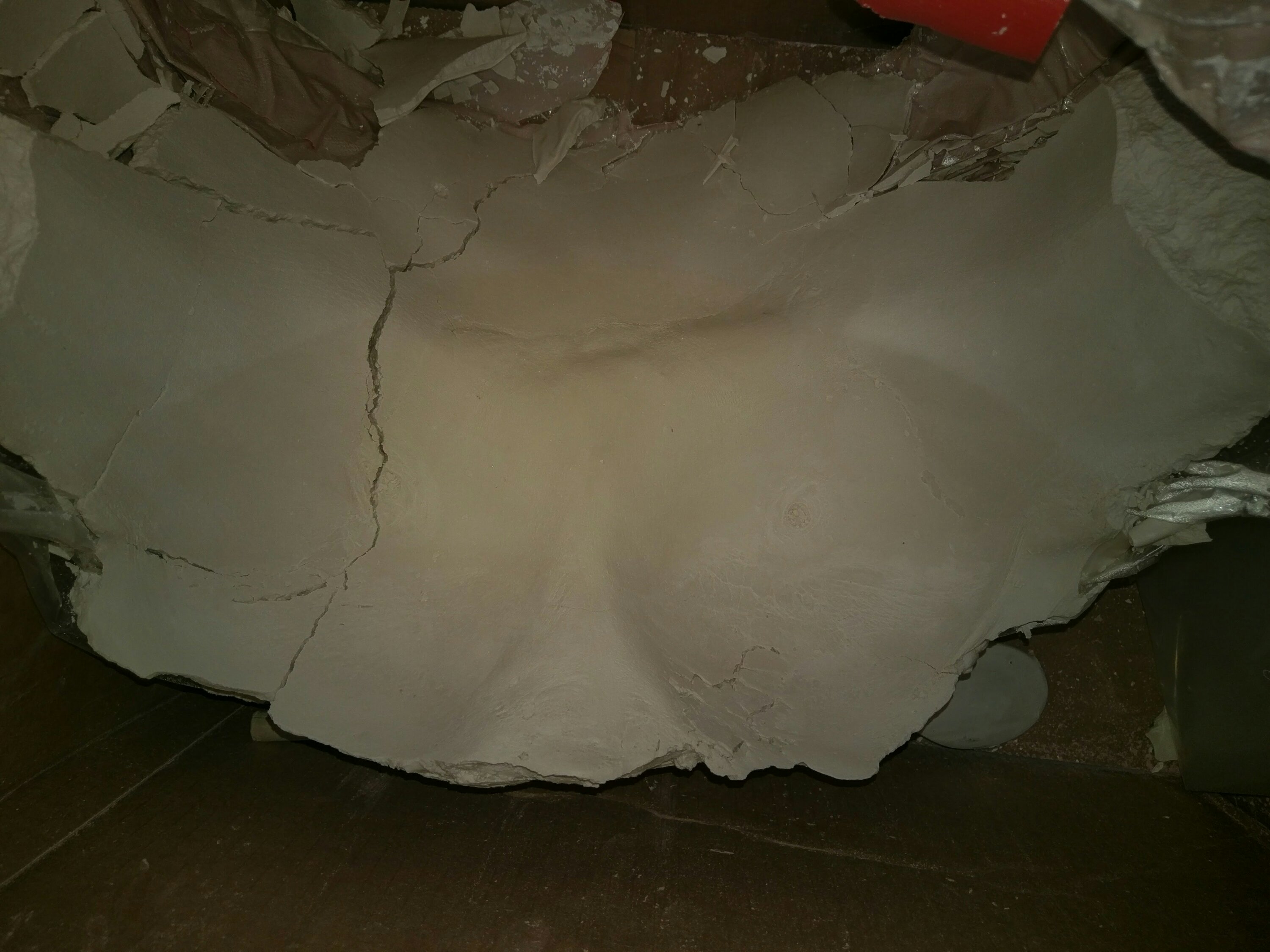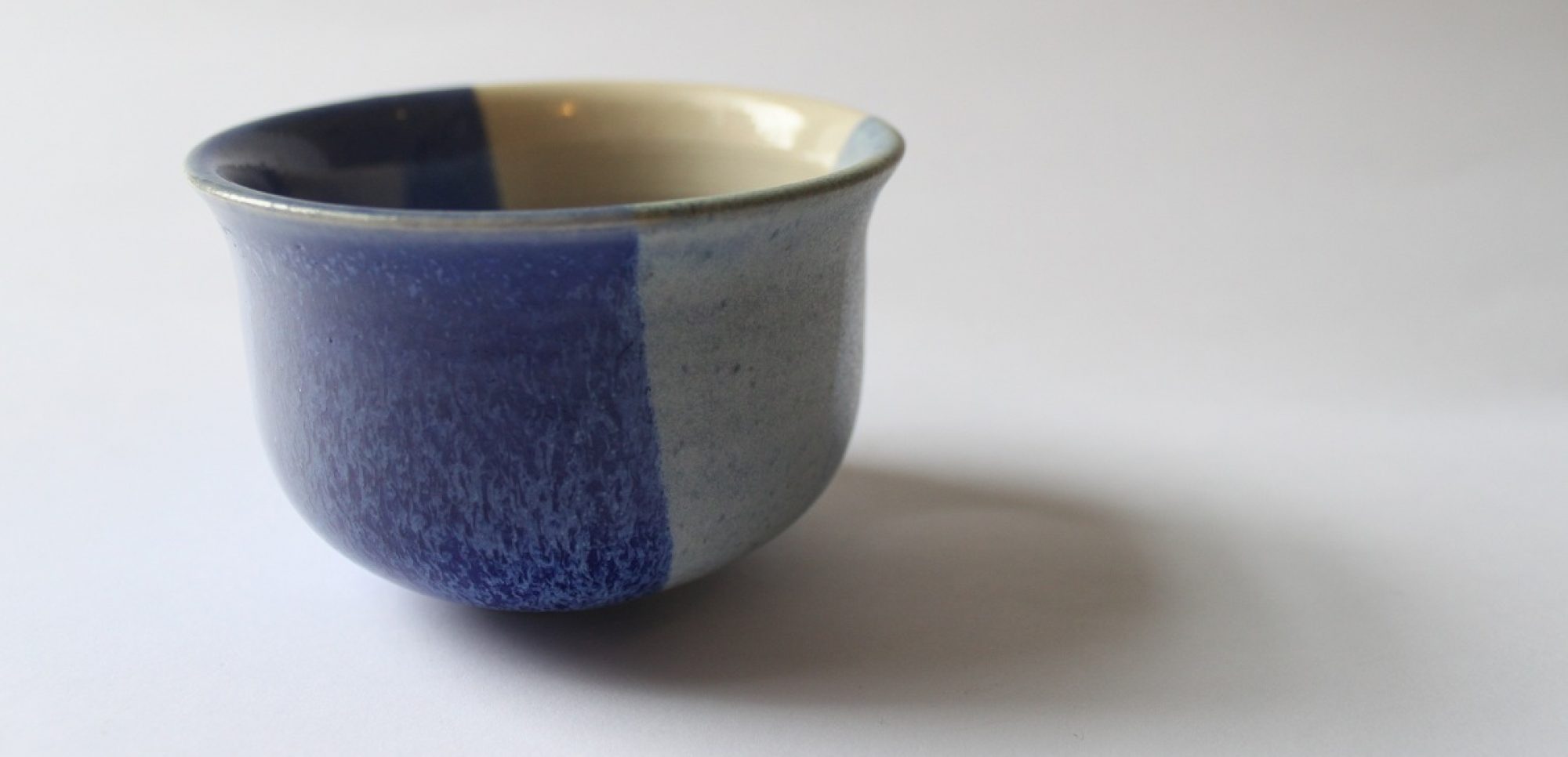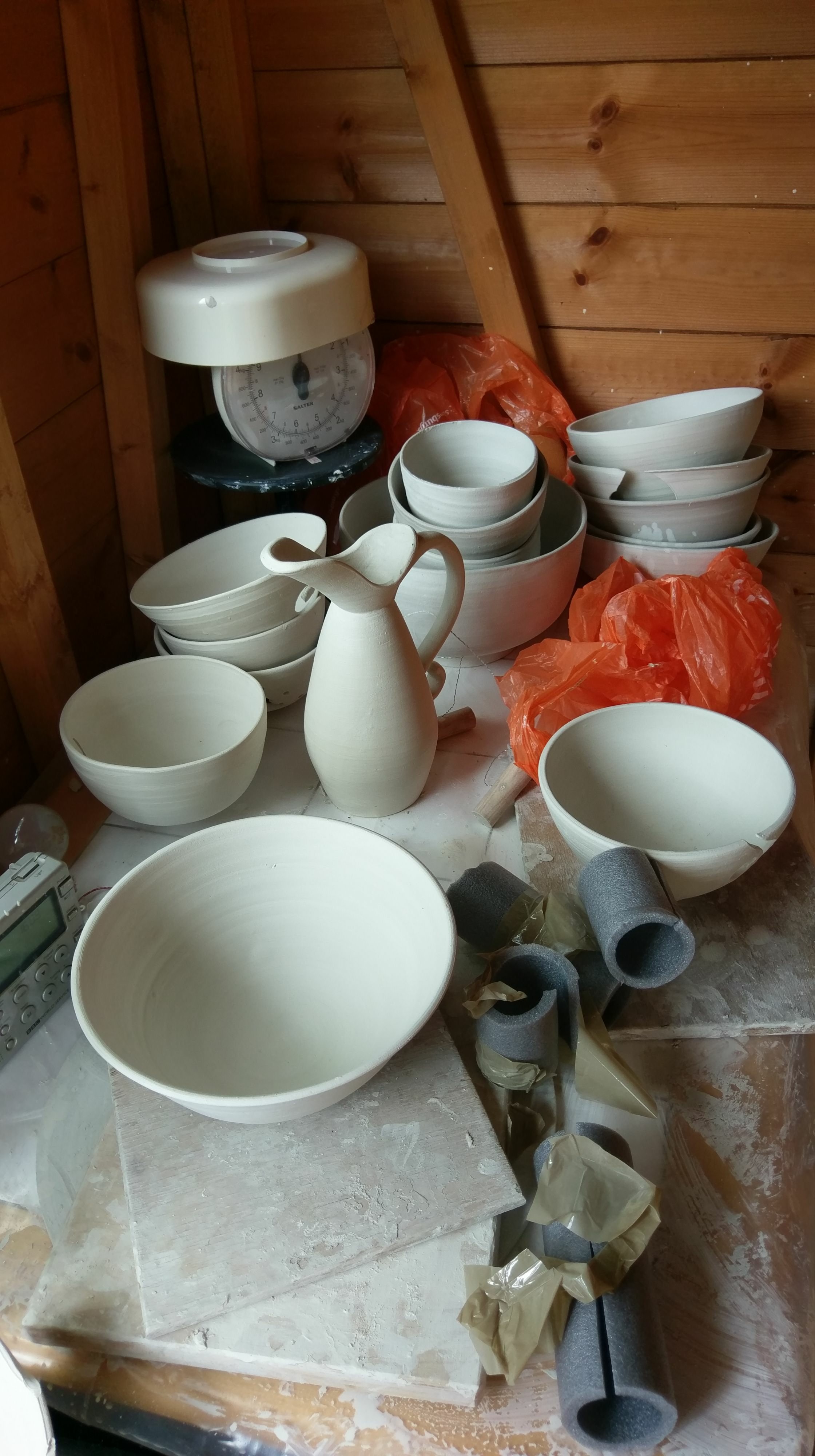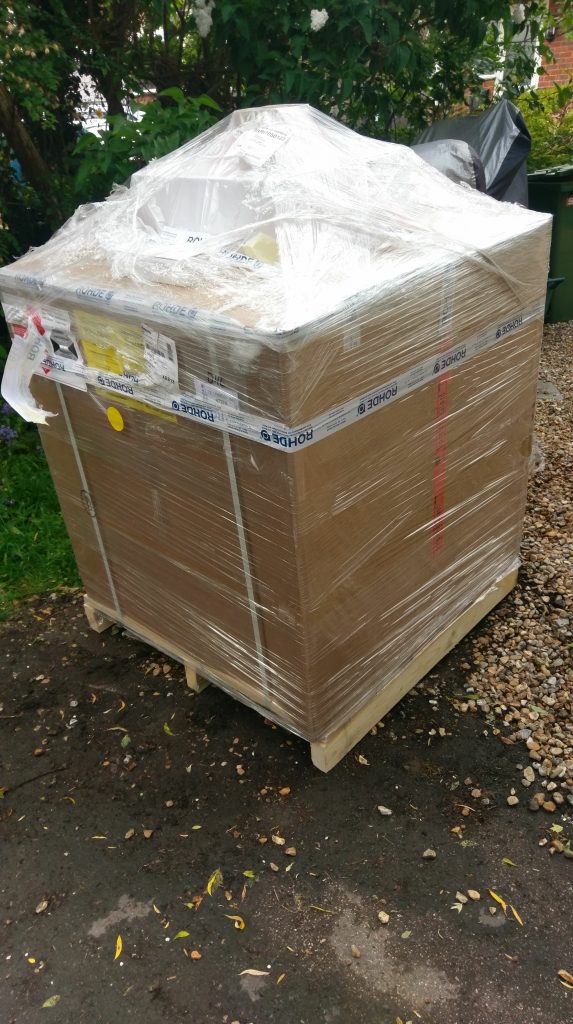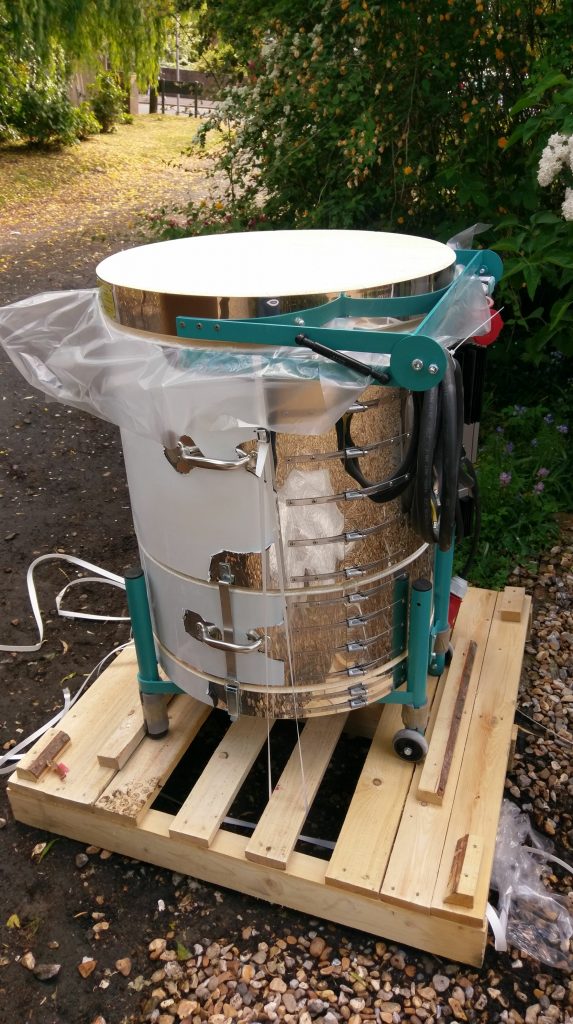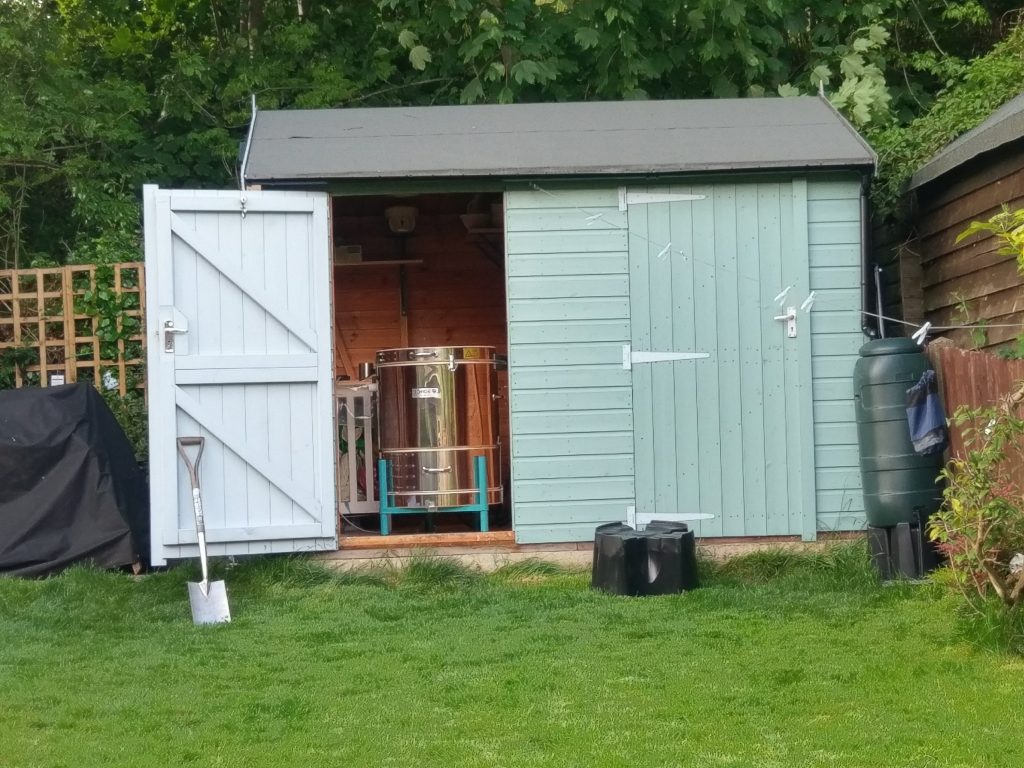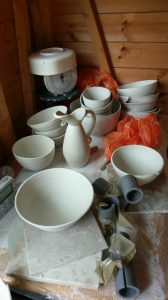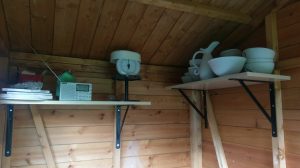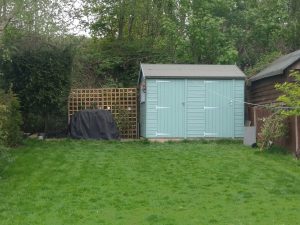My beautiful friend was sadly diagnosed with breast cancer at the end of last year.
After triumphantly taking on chemotherapy and with surgery looming we discussed taking a cast!
We had planned doing it slowly, but a rapid surgery date meant action stations!
I had done lots of research on body casts and while you can take wonderful casts with alginate type casting powders, you can not make a clay cast from them.
I bulk ordered fine plaster of Paris and we got to work!
Now the difficulty we faced is that taking a cast of two breasts is harder than one! I have seen examples were you can, essentially, strap a halved flower pot to one breast and fill that plaster. I didn’t have a flower pot big enough!
So I opted for heavy duty nylon bags and lots of duct tape. We made a pocket so that she could stand up to get the most natural looking cast possible.
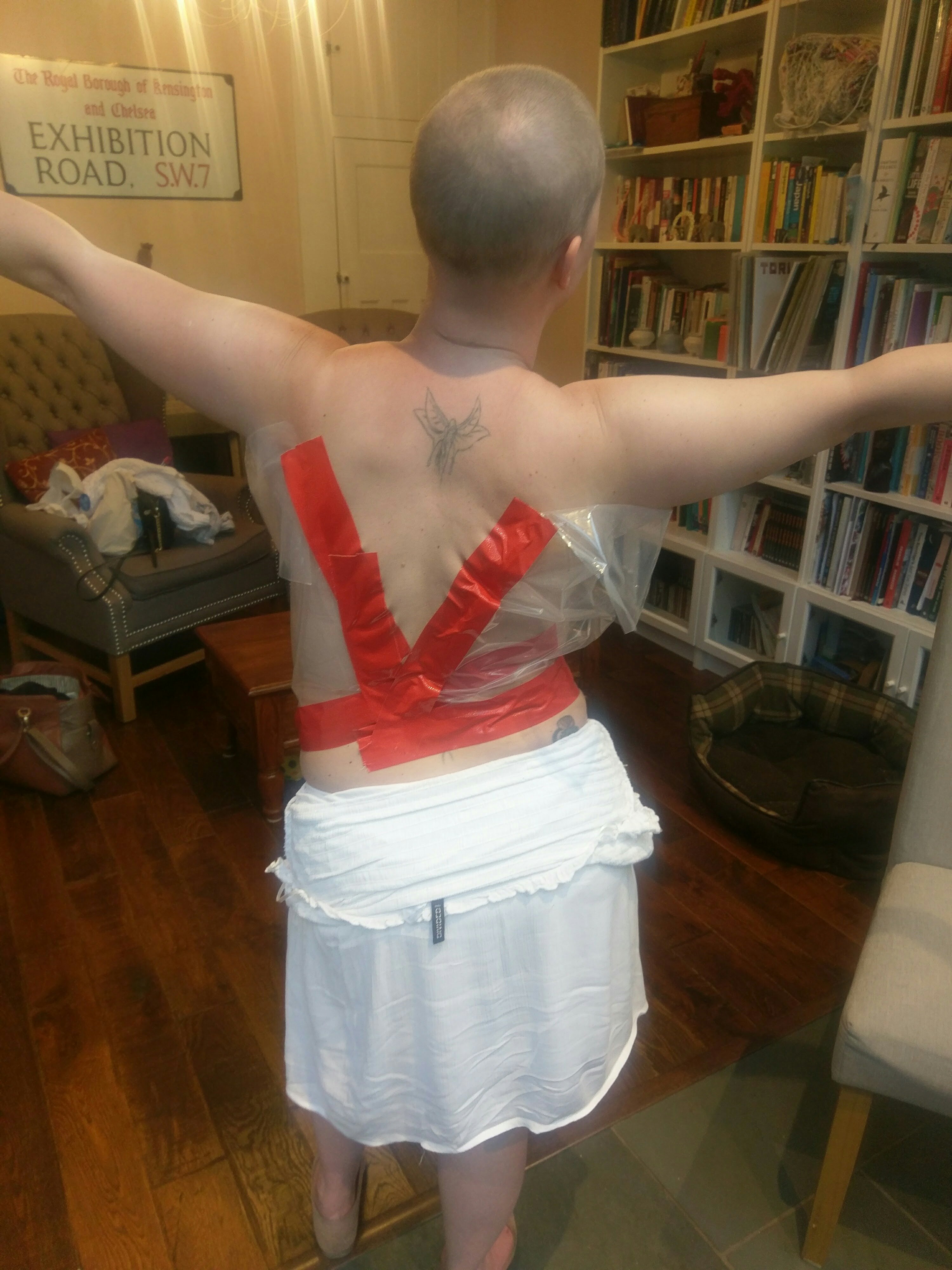
Then we went to the garden (good idea) and I started to make batches of plaster and slowly filled up the pocket with plaster… the plastic pocket sprung a leak (bad idea).
We tried wrapping more tape around to seal the leak and this helped a little. Also I completely underestimated exactly how much plaster you need (lots), so it was a race against time to make another batch.
Happily, by this time the first batch of plaster had started to set which helped with the leak!
A downside of lots of plaster is that it becomes very heavy so we had to support the weight whilst also not squashing the cast!

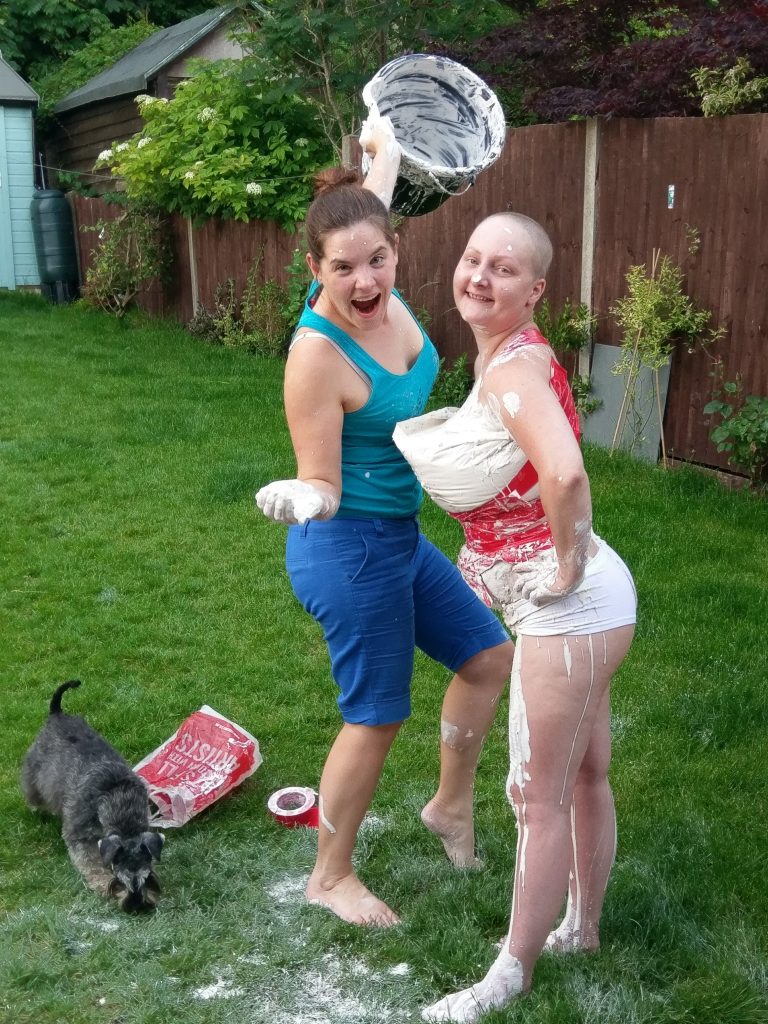
It was a messy business! (Dog was very helpful in this task obviously!)
Once the plaster had hardened a little my friend needed a little lie down…
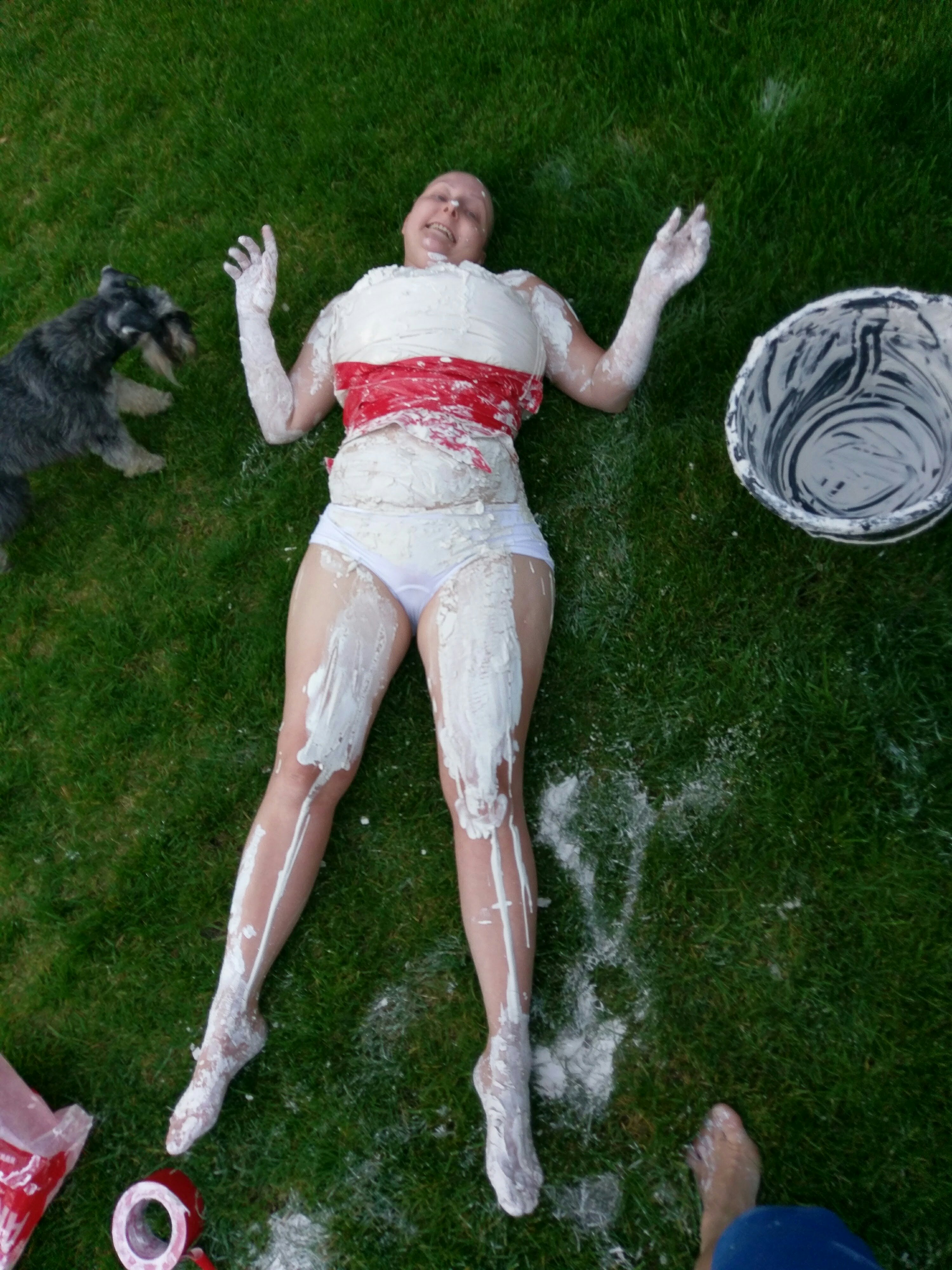
It turns out plaster is hard to get out of grass, so I would recommend that you pop a sheet on the floor if you try this at home!
Plaster is exothermic (gives out heat) as it sets and it is important to remove it from skin contact before it gets too hot. I cut the mould from my friend’s body and carefully removed the mould….
Success!
